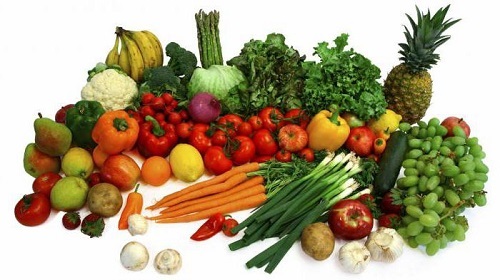
BY EPHREM ANDRAGCHEW
A common proverb by Dr Michael Osae goes “ Eat Your Food as your Medicine, Otherwise you will have to Eat Medicines as your Food” These days, people are very cognizant about their diet and eating habits since a modern, busy lifestyle and tense work culture has pushed up the consumption of fruits and vegetables.
Accordingly, the sector is booming and opening up new economic prospects especially, employment. It has also introduced a new dimension into the agriculture sector across the world. Unlike agricultural practices of the past, horticulture is currently considered as a separate industry. Further, the industry has showed remarkable progress due to the growing demand for fresh flowers and several associated products. This has generated new income prospects for farmers and other working in the allied sectors of this industry. The processing, transportation, distribution and packing sectors associated with the horticulture industry have also been momentously benefitted.
Countries in the world have benefited from the sector in accordance with their capacity and performance. According to World Bank report, China was the leading producers of fresh fruit worldwide in 2019. China was ranked first among these countries, producing some 246.62 million metric tons of fruit that year. Technological development in fruit production and rapid improvement of supply chain infrastructure around the world has been some of the major drivers for a steady increase in yield. Thus, the total acreage or number of plants devoted to various fruit has dropped, remained about the same, or not risen in proportion to the increase in the respective crop production. The industry of fruits and vegetables especially, flower market is expected to reach 41. 1 Billion dollars by the year 2027.
In fact, research and studies have indicated that Ethiopia with diverse soil and climate comprising several agro-ecological regions provides plenty of opportunities to grow a variety of horticulture products. Increasing the yield and production of horticultural crops is an important factor in ensuring Ethiopian food and nutrition security. But Ethiopia has used the opportunity less than expected.
Ethiopian Horticulture Producers and Exporters Association (EHPEA) CEO Tewodros Zewdie said the flower industry has used 2000 hectares of flower of which 1600 hectares has been dedicated to exportable fruits and vegetables. For local consumption, the horticulture sector has also covered 10,000 hectares of land. The sector has huge potential not only to create job opportunity, but to produce plenty of products within small land. Accordingly, the sector creates job opportunity for more than 160 thousand citizens, he added.
It is true that the untouched sector has significantly contributed for the economy of the country. According to report from Ministry of Trade and Industry, in the previous Ethiopian fiscal year, the country has earned about 500 million USD exporting fruits and vegetables. In the current fiscal year, Ethiopia has earned more than 3 billon USD. This is among the products that have accounted for 83 percent ($ 3 billion) of total revenue: first Coffee 25 per cent, second, Gold 19 percent, third, flower 13 per cent, fourth, Chat 11 percent, fifth, Ointment grains 9 percent and sixth 6 percent of cereals.
Selamawit Ketema and Tesfaye Tadesse academic article in 2019 entitled “Horticultural Crops Research and Development in Ethiopia: Review on Current Status” stated that the horticulture sector contributes to the economic growth and poverty reduction agenda of the country. Because of its strategic importance, the development strategy of Ethiopia puts emphasis on the intensification of crops production. Besides, Bezabih et al. in 2014 academic articles entitled “Scoping Study on Vegetables Seed Systems and Policy in Ethiopia” explained that horticultural crops play a significant role in developing country like Ethiopia, both in income and social spheres for improving income and nutrition status. Furthermore, it helps in maintaining ecological balance since horticultural crops species are so diverse. It also provides employment opportunities as their management being labor intensive, production of these commodities should be encouraged in labor abundant and capital scarce countries like Ethiopia.
Ethiopian Biodiversity Institute Crop and Horticulture Director General Wubeshet Teshome in his part indicted that Ethiopia is a country with great variety of climate and soil types that can grow diverse horticultural crops for home consumption and foreign markets.
He further noted that horticultural products are rich in vitamins, carbohydrates and other nutrients. Consequently, nutritional deficiencies such as vitamin A and C and iron can be corrected by use of selected vegetable, root crops and fruits.
If the horticulture sector has huge potential, easy to produce and earn foreign currency, it is important to ask questions like what are the obstacles or challenges to the sector not to grow as it is expected? According to Tewodros, Ethiopia has huge potential for horticultural products. Currently, the flower sector has brought substantial foreign currency. Nonetheless, proper management, skill and knowledge gap, input problem, lack of sufficient infrastructures, up to date technologies and so on are the shortcoming of the sector. Hence the government should give due attention to the sector which could solve the problems. Wubeshet added that Ethiopia has mega biodiversity resources nonetheless, there is lack of awareness. The government also gives less attention compare with other related sectors.
Cognizant of the countries enabling and favorable condition, fruits and vegetables need to be produced abundantly. Because along with new way of life style people are using fruits and vegetables in day to day food consumption. Apart from that, the horticulture sector has helped to preserve indigenous fruits and vegetables of the nation.
As to Tewodros, the Netherlands, France, Germany, Italy, Canada, Norway, Sweden, UK, the Middle East, and other EU countries are the destinations of Ethiopia’s exporting horticulture products. Especially, in the flower industry, Ethiopia has been contending Colombia, Ecuador, Kenya, and Netherlands and so on. Accordingly, the competition is high and tense. Therefore, the government and stakeholders need to collaborate to motivate the sector.
The government is working towards modernizing the horticulture sector through refining and strengthening the legal, policy and regulatory environment, according to Ministry of Agriculture. The Ministry disclosed also it is striving to systematically remove the bottleneck that hinders production, productivity and market requirements. Hence, the government gives due attention to further attract and develop the industry.
Agriculture contributes for about 50 per cent share in the nation GDP. Share of agriculture in employment is 85 percent and more than 75 percent of Ethiopia’s industry is engaged in processing of farm products. Around 12,000 hectares of fruit plantation is surveyed in the peasant and state farms. From the total area of fruit plantation about 70 percent is cultivated by individual peasant farmers. The total annual volume of fresh fruit production of the state sector agriculture contribution is less than 20 per cent. This shows that the sector needs further reinforcement. Besides, motivating and supporting the sector will help to cope with the new lifestyle of the country. More specifically, it is important to identify crops and horticulture seeds which are important to use in drought prone areas.
The Ethiopian Herald August 28/2021





